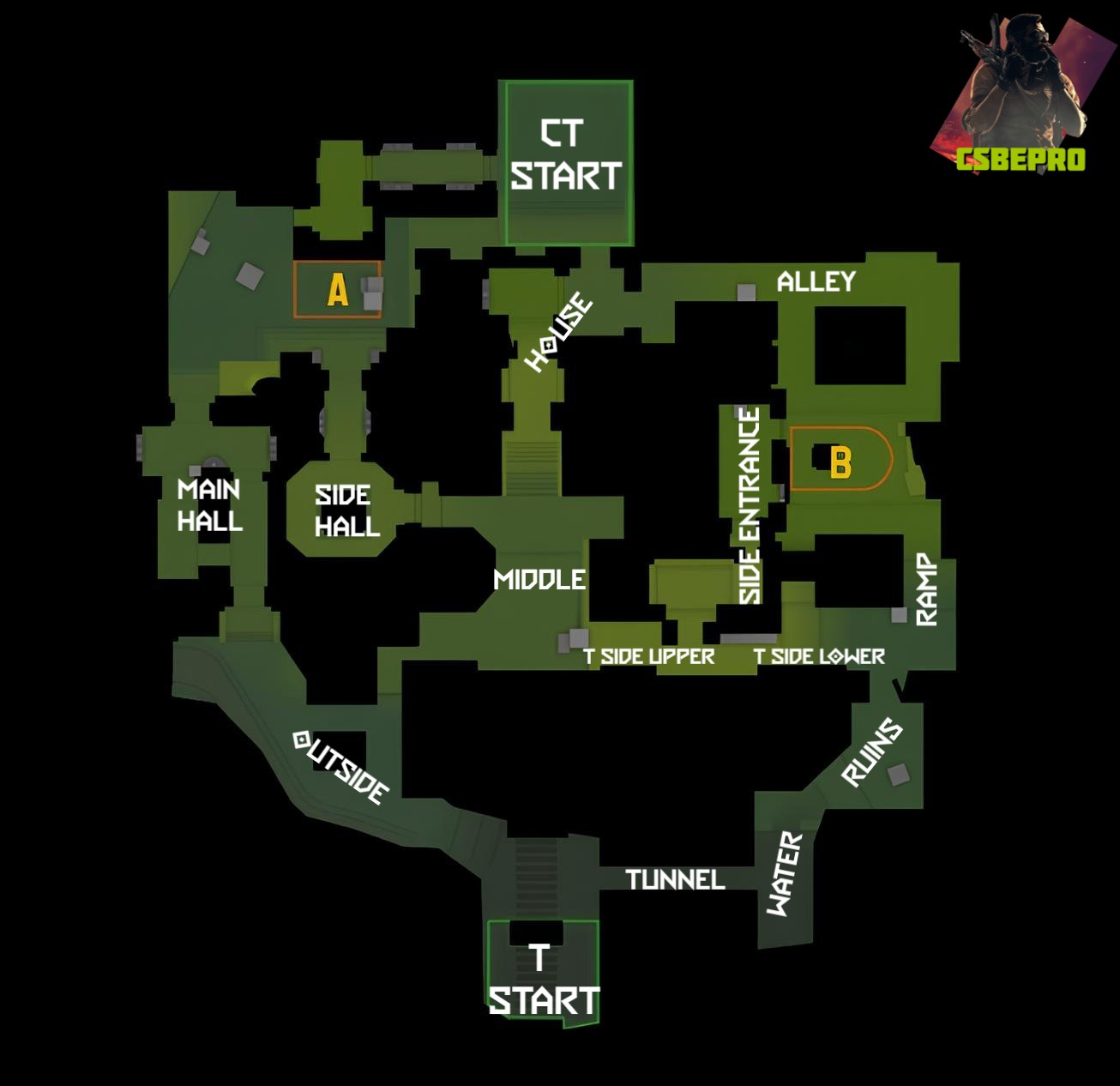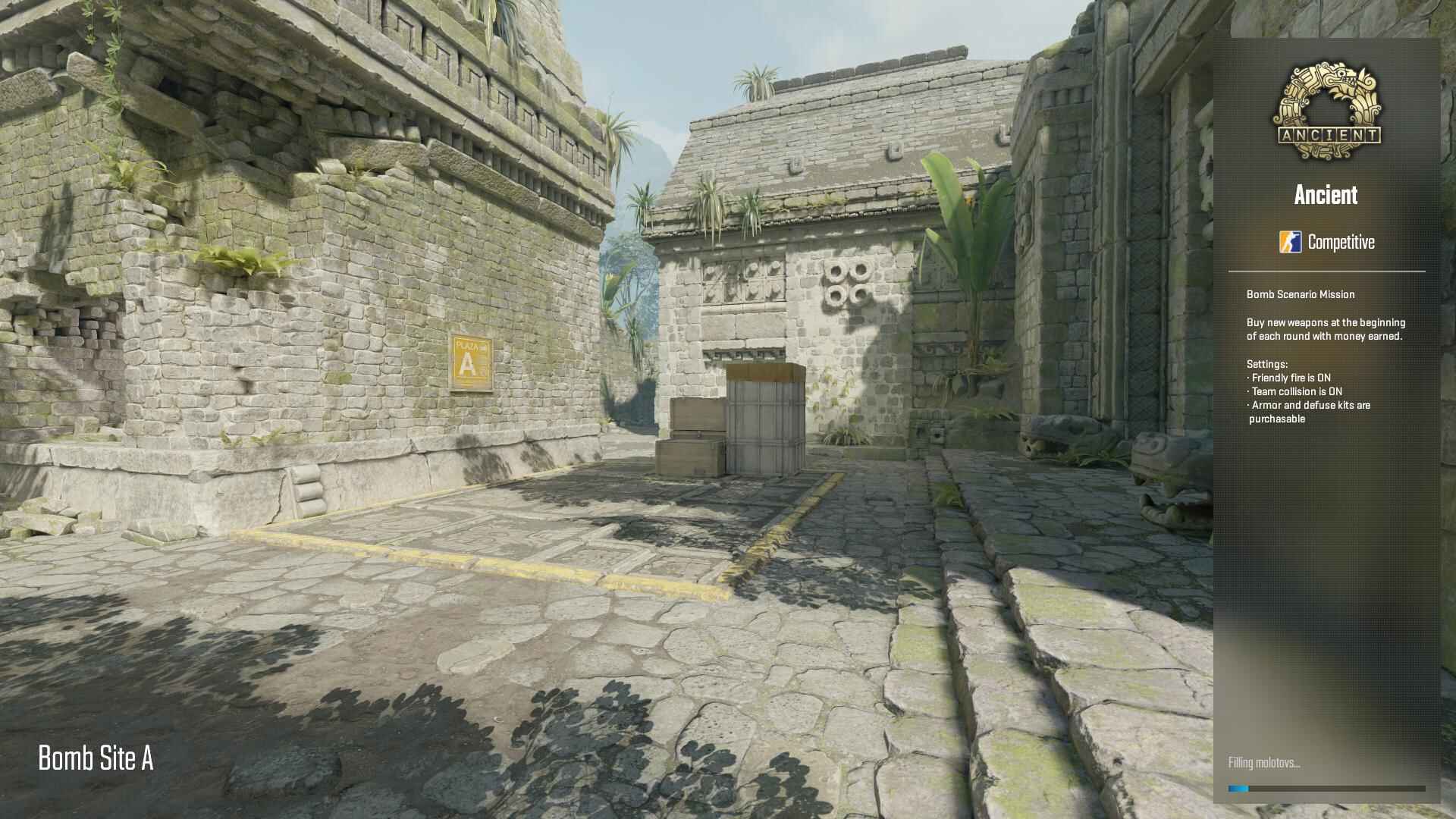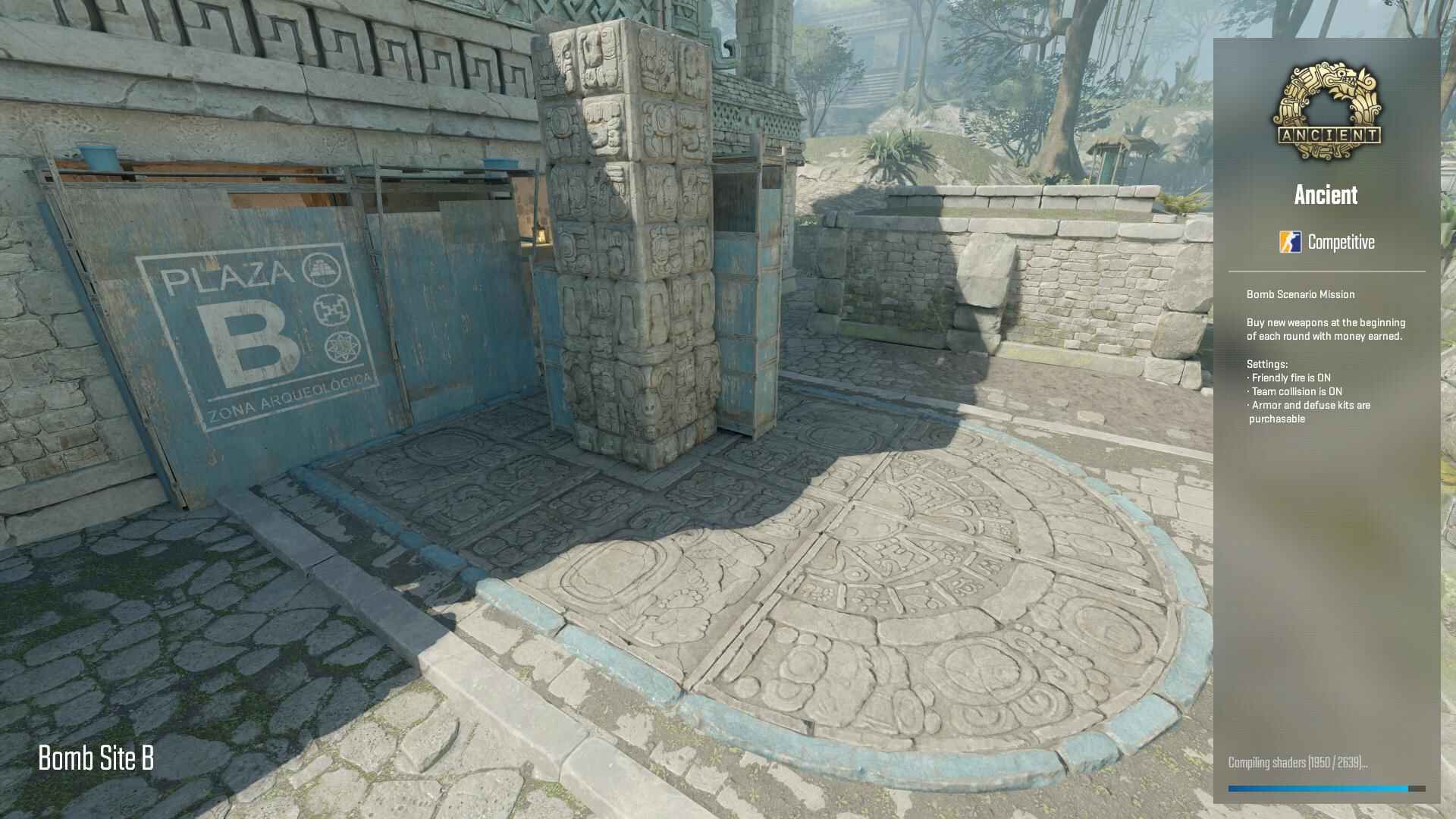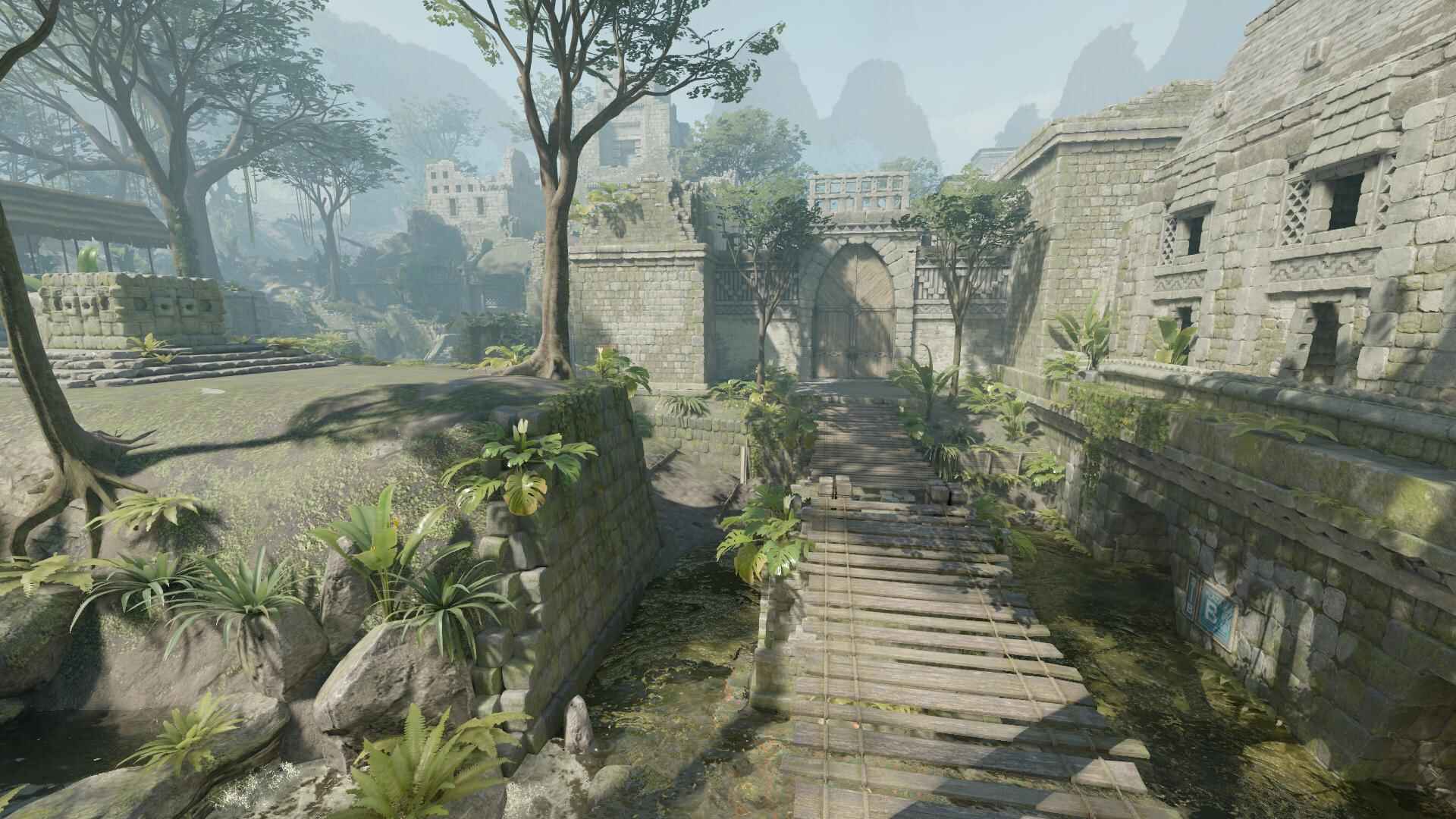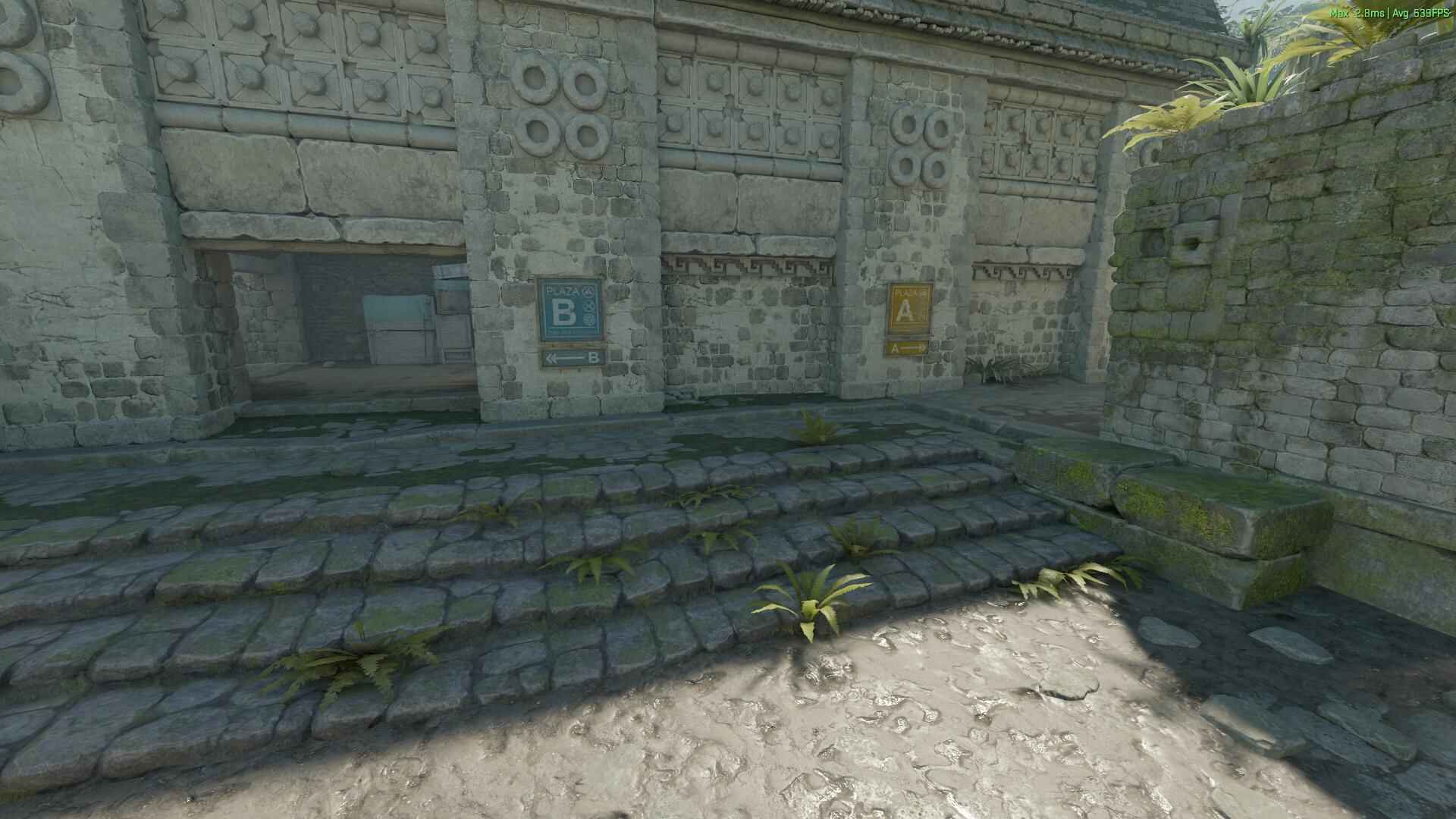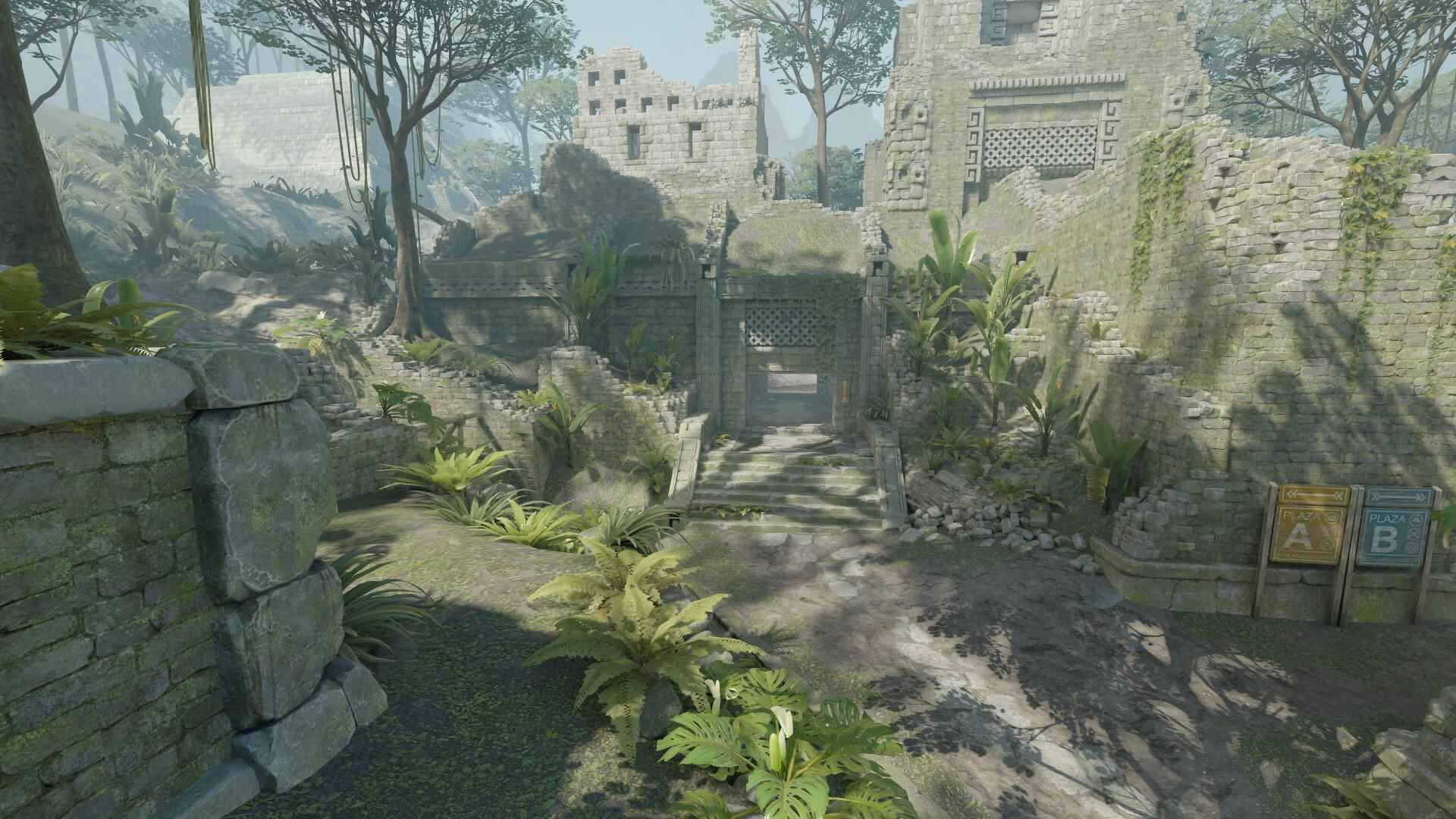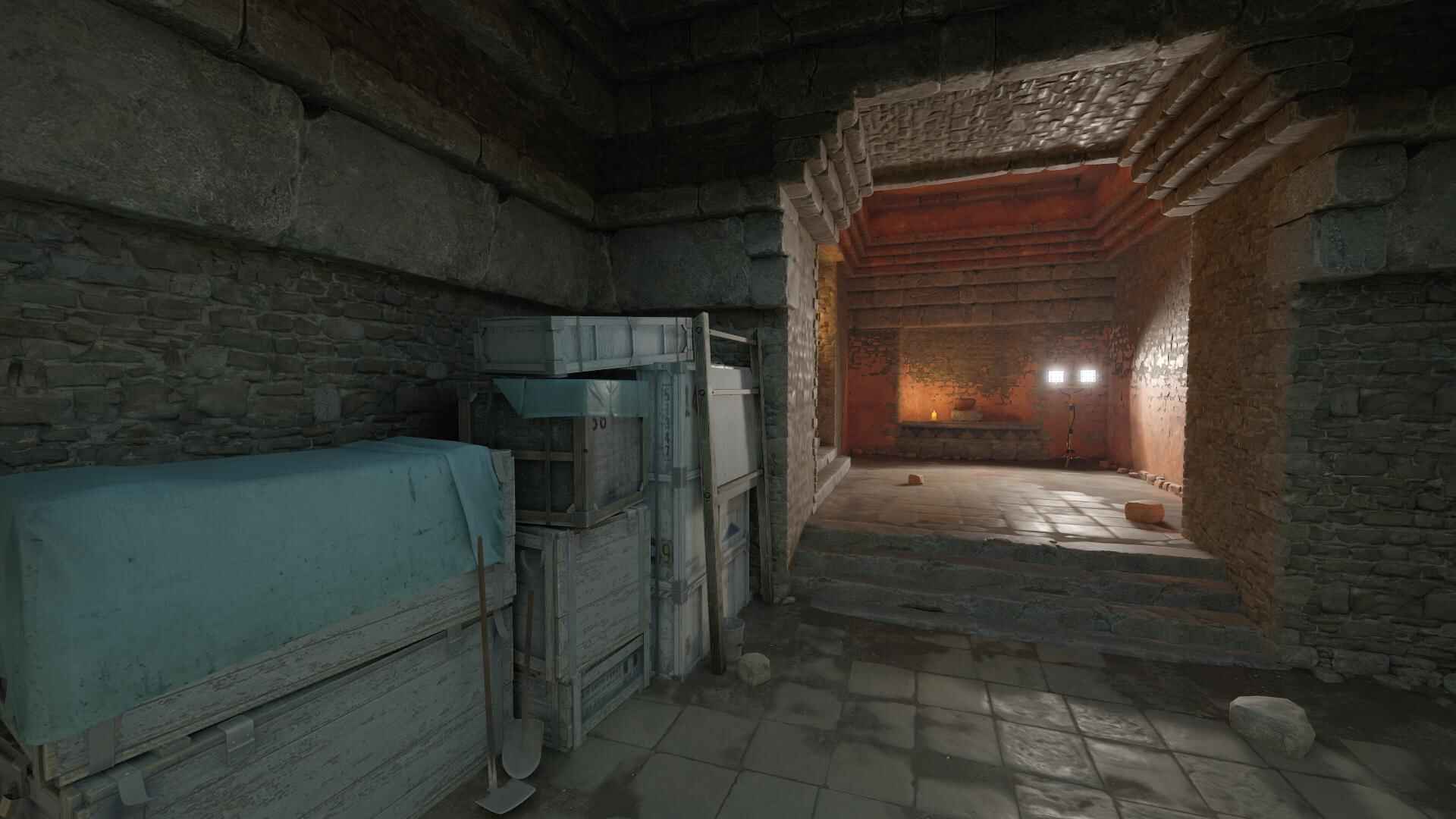Home » Counter-Strike 2 » ANCIENT
01/11
ANCIENT
Ancient is one of the most distinctive and strategic maps in Counter-Strike 2, set against the backdrop of a lost civilization. With dense jungle surroundings, crumbling stone structures, and an atmosphere reminiscent of de_aztec from previous Counter-Strike games, this battleground offers a unique mix of close-quarters combat and long-range engagements.
Overview
It not be the largest map in Counter-Strike 2, but its design is deceptively complex. Players must navigate tight corridors, open bomb sites, and interconnected pathways that allow for quick rotations and unexpected ambushes. Every engagement requires careful planning, whether it’s holding a key angle, pushing through a chokepoint, or executing a coordinated site take.
With its blend of historical ruins and modern competitive design, Ancient rewards teams that adapt quickly and make strategic use of the environment. Learning the callouts, understanding power positions, and perfecting grenade placements can make all the difference in controlling the map.
Originally introduced in Counter-Strike: Global Offensive, Ancient has been reimagined for CS2 with updated visuals, improved lighting, and refined map geometry. These enhancements not only make the map more immersive but also impact gameplay in subtle ways, altering sightlines and refining movement flow.
About
- Map Type: Bomb-defusal
- Faction Terrorist: Phoenix Connexion, Eastern Europe
- Faction Counter-Terrorist: SAS (Special Air Service), UK
- Location: Mexico
- Release Year: 2020
- Map code: cs_ancient
Logo

Ancient Map Callouts
T START – This is the initial spawn area for Terrorists, offering immediate access to either “Outside” or “Tunnel“. Players can choose between fast-paced advances or stealthier approaches.
OUTSIDE – An open area just beyond T Spawn, located on the lower-left section of the map. It provides a pathway toward “Main Hall” and “Side Hall,” both leading to Bombsite A or offering rotation options toward “Middle“.
MAIN HALL – A corridor that connects “Outside” to the vicinity of A site. This high-traffic route is crucial for securing safe passage toward A or setting up a flank into “Middle“.
SIDE HALL – A parallel path to “Main Hall” that also leads toward A or “Middle“. Though less direct, it can be used for surprise pushes or as part of a split-site attack strategy.
A (Bombsite A) – One of the two bombsites on Ancient, positioned on the upper-left side. This area features tight corners and multiple choke points, making it a prime location for defenders to hold crossfires.
CT START – The initial spawn area for Counter-Terrorists, providing fast access to both bombsites. Players can reach A through “House” or B via “Alley“.
HOUSE – A structure near CT Spawn that overlooks parts of “Middle” and provides a route toward Bombsite A. Its elevated vantage points allow defenders to monitor enemy movements in central areas.
MIDDLE – The central section of the map, connecting to nearly every major pathway. Controlling this area is crucial for dictating rotations and cutting off enemy flanks.
ALLEY – A narrow passage to the right of CT Spawn that leads toward Bombsite B. This is a quick rotation route for CTs, useful for reinforcing B or launching an aggressive push into T territory.
SIDE ENTRANCE – A pathway leading into Bombsite B from the mid-to-upper section of the map. This provides an alternative angle for attacks or defenses, often used in split pushes or late rotations.
SIDE UPPER / SIDE LOWER – Two elevation levels that link “Middle” or “Alley” to Bombsite B. The verticality here creates unexpected angles for defenders, making proper use of smokes and flashes essential.
B (Bombsite B) – The second bombsite, positioned on the right side of the map. It is more open than A but has multiple entry points, requiring careful coordination and utility usage to hold or take control effectively.
RAMP – A sloped passage that leads into or out of Bombsite B, depending on the approach. This is a key choke point where defenders often hold the top to secure the site’s main entrance.
RUINS – An area near Bombsite B featuring partial cover and elevated spots. Commonly used by CTs for rotations or anchoring defense, this spot is vulnerable to flanks from “Water” or “Tunnel“.
WATER – A lower section of the map near B with a partially flooded terrain. Footsteps here can reveal player positions, making it useful for sneaky rotations or surprise pushes.
TUNNEL – A covered pathway that starts near T Spawn and runs toward the right side of the map, close to “Water” and “Ruins“. This is an effective route for stealth flanks, late-round rotations, or quick access to B when uncontested.
Every callout on Ancient plays a unique role in controlling the map and shaping round strategies. Learning these locations and how they connect allows for more coordinated pushes, rotations, and defensive setups. Practicing in each of these spots while understanding sightlines will give you a strategic edge in matches.
Tactical Strategies
Terrorist Side
To gain aggressive control of Middle, push from T Start toward Middle to disrupt CT rotations. Use smokes and flashes to secure vantage points near House or Alley if CTs contest Middle. Once you establish control over this central area, you can quickly pivot to either A or B, utilizing rotations through Side Hall, Main Hall, or Side Entrance to overwhelm defenders.
When executing a site take, decide between A or B based on your intel. For A, split your team between Main Hall and Side Hall to force defenders at House or CT Start to divide their attention. For B, coordinate a push through Tunnel or Middle into Side Entrance, while considering sending a lurker through Water or Ruins to create a flank threat and keep CTs uncertain about your final move.
Utility usage is crucial—smoke off key choke points like Alley or House to limit defensive sightlines, and flash around corners leading to bomb sites to help entry fraggers move in safely. Incendiary grenades can block rotations or flush defenders out of positions near Ramp or Side Upper. Always communicate utility usage effectively to ensure your team can capitalize on openings.
Counter-Terrorist Side
To establish defensive anchoring, position at least one defender near A to cover Main Hall and Side Hall, while another anchors B to monitor Side Entrance and Ramp. A third player should hold House or Alley to keep an eye on Middle. Quick rotations from CT Start are crucial if an early rush is detected, so staying aware of your teammates’ positions is essential.
Controlling Middle is critical—use House to peek early and call out enemy movement while a second player holds Alley to prevent fast T pushes. Effective communication between these positions enables timely rotations and disrupts the Terrorists’ flanks.
Communication and coordination are key—call out specific locations like “Outside,” “Tunnel,” or “Side Upper” to keep your team updated on enemy movements. Listen for footsteps in Water or Ruins to anticipate a flank, and share information about remaining utility. Coordinate smokes or molotovs to stall pushes at critical choke points such as Main Hall, Side Hall, or Ramp, ensuring your team maintains control of the map.
Tips
CS2’s enhanced lighting makes shadows a crucial factor in gameplay. Understanding which areas provide enough darkness for stealth and which expose your position can give you a tactical edge. Sound also plays a vital role, with reworked mechanics making footsteps and reloading noises valuable clues, especially in narrow corridors.
Mastering flank routes can turn the tide of battle. Underground passages and less-traveled paths offer opportunities for surprise attacks, so spending time in practice modes to learn their timing is essential. To stay unpredictable, vary your approach by mixing rushes, slow pushes, and utility timings, keeping opponents guessing and off-balance.
Conclusion
Ancient in Counter-Strike 2 is more than just another map—it’s a reimagined battleground where history converges with modern tactical warfare. Merging the allure of ancient ruins with the precision of competitive design, it offers unique challenges that reward players who take the time to master its intricate layout and pivotal engagements. Success on Ancient requires more than raw aim; it demands strategic rotations, control of key areas, and seamless teamwork to outmaneuver opponents.
